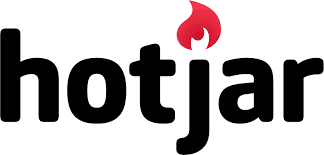In the digital age, the right analytics tool isn’t just a nice-to-have; it’s your compass in the vast sea of online interaction. Whether you’re a small startup or a burgeoning enterprise, understanding how users navigate your digital presence can illuminate the path to conversion and customer satisfaction. Today, we’re comparing two giants in the analytics realm: Hotjar and Optimizely. Each brings unique strengths to the table, but which one is the right fit for your journey? Let’s dive into the details to help chart your course.
| Hotjar | Optimizely |
|---|---|
 |  |
| G2 Score – 4.3 out of 5 stars | G2 Score – 4.5 out of 5 stars |
| TrustRadius Score – 8.2/10 | TrustRadius Score – 8.7/10 |
User Experience Insights
Seeing Through Your Users’ Eyes
In the world of digital analytics, understanding the user experience (UX) is like discovering a treasure map. It guides you to make informed decisions that can transform a casual visitor into a loyal customer. Let’s explore how Hotjar and Optimizely stack up when it comes to providing these crucial insights.
Hotjar: Capturing the Human Side of Digital Interaction
Hotjar stands out for its commitment to making the complexities of user behavior understandable and actionable for businesses of all sizes. At the heart of Hotjar’s approach is the visualization of user actions — heatmaps that show where attention is concentrated, session replays that capture the actual journey of a user across a page, and feedback tools that directly gather user sentiments. This suite of features is designed not just to collect data but to tell a story, highlighting the nuances of how real people interact with digital products.
What makes Hotjar particularly appealing is its ability to distill complex behavioral data into insights that feel immediate and tangible. For teams focused on improving website usability and enhancing the user experience, Hotjar’s tools provide clear signposts. Seeing where users click, move, and scroll can quickly inform design changes, while session replays offer a playback of user frustration points, enabling teams to make data-driven decisions that are grounded in actual user experiences.
Optimizely: Engineering Optimal Digital Experiences Through Testing
Optimizely, in contrast, takes a more analytical approach to understanding user experience, focusing on the power of experimentation to drive improvements. Its platform is built around the idea that the best way to optimize digital experiences is through rigorous, data-backed testing. With Optimizely, businesses can set up and run A/B tests, multivariate tests, and more, comparing different versions of their digital presence to see which performs better in terms of user engagement, conversion rates, and other key metrics.
The strength of Optimizely lies in its ability to not only reveal how users are interacting with your site but to also provide a framework for improving those interactions over time. By enabling businesses to test hypotheses about user behavior, Optimizely turns the website into a laboratory, where every element can be optimized based on empirical evidence. This methodical approach to enhancing user experience is especially powerful for organizations that are committed to making data-driven decisions at every turn.
Integration Capabilities
Crafting a Connected Digital Experience
In the quest for the perfect analytics tool, the ease and breadth of integrations can be the wind that propels your digital strategy forward or the anchor that holds it back. Let’s see how Hotjar and Optimizely fare in this critical aspect.
Hotjar: Streamlining for Synergy
Hotjar, known for its user-friendly approach to analytics, extends this philosophy to its integration capabilities. It offers straightforward integrations with a variety of website builders, content management systems (CMS), and e-commerce platforms such as WordPress, Shopify, and Wix. This ensures that regardless of where your digital presence is hosted, Hotjar can effortlessly become part of your toolkit.
Additionally, Hotjar acknowledges the importance of working in tandem with other analytics and feedback tools. It complements data from Google Analytics, for instance, by adding a qualitative layer to the quantitative data these platforms provide. This synergy allows teams to gain a well-rounded understanding of user behavior, combining what users do with why they do it, all without leaving the Hotjar interface.
The focus with Hotjar’s integrations is on enhancing its core offerings without overwhelming users with complexity. This makes it an excellent choice for businesses that want a plug-and-play solution that enriches their existing digital infrastructure with minimal fuss.
Optimizely: Engineering a Robust Ecosystem
Optimizely, with its roots deeply embedded in experimentation and optimization, boasts an extensive array of integrations that reflect its enterprise-level capabilities. Beyond standard CMS and e-commerce platforms, Optimizely integrates with a wide range of marketing automation tools, data management platforms, and analytics services. This expansive integration landscape is designed to support complex digital strategies that rely on a sophisticated web of tools and data sources.
What sets Optimizely apart is its ability to not just coexist with other tools but to enhance and be enhanced by them. For instance, its integrations with CRM systems can allow for more personalized user experiments based on customer data, while its compatibility with advanced analytics platforms can help in deeper analysis of experiment outcomes.
For businesses that operate within a complex digital ecosystem and who see experimentation as a core part of their strategy, Optimizely’s robust integration capabilities ensure that it can act not just as a tool, but as a central hub for driving forward digital innovation.
Customer Support and Learning Resources
Guiding Your Journey
The support offered by an analytics tool isn’t just about solving technical glitches; it’s about empowering users to make the most of the tool, enhancing their strategies based on data-driven insights.
Hotjar: Nurturing Growth with Support and Insights
Hotjar distinguishes itself with a user-centric approach that extends beyond its analytics tools, encapsulating a broad spectrum of support and educational resources designed to empower users at every step. The platform’s dedication to user success is evident in its responsive customer service team, which stands ready to assist with inquiries ranging from technical difficulties to strategic advice on leveraging Hotjar’s features most effectively. This direct line of support ensures that users can quickly resolve issues, minimizing downtime and frustration.
Parallel to its customer service, Hotjar offers an extensive library of resources aimed at educating and inspiring its user base. From detailed guides and tutorials that cover both foundational and advanced uses of the platform to a rich collection of case studies, Hotjar provides users with a roadmap for understanding and improving user experience on their digital properties. Webinars and a vibrant community forum further enrich Hotjar’s educational offerings, creating a space for shared learning and exchange of best practices. This holistic approach to support and learning underlines Hotjar’s commitment to not just offering tools but fostering a deeper understanding of user behavior analytics.
Optimizely: Empowering Users with Comprehensive Knowledge and Expertise
Optimizely, on the other hand, approaches customer support and education with the depth and rigor reflective of its platform’s capabilities. Recognizing the complexities inherent in data-driven experimentation, Optimizely offers a layered support system designed to meet users where they are—be it novices taking their first steps into A/B testing or seasoned marketers diving into advanced optimization strategies. Its 24/7 support service ensures that users have access to expert assistance whenever needed, bolstering confidence and encouraging ambitious experimentation.
Beyond immediate support, Optimizely’s commitment to user empowerment shines through its Optimizely Academy, an educational initiative that offers courses and certification programs in various aspects of experimentation and digital experience optimization. This structured learning path is complemented by an exhaustive resource library, filled with articles, e-books, and videos that cover the theoretical and practical aspects of using Optimizely to its fullest potential. For those looking to stay on the cutting edge, Optimizely’s community forums and industry events serve as conduits for innovation, discussion, and professional growth.

Related: Check out our free SEO suite

Data and Insights
Uncovering User Journeys and Behaviors
In the realm of digital analytics, the type of data collected and the insights drawn from it can significantly influence strategic decisions and optimizations. Let’s delve into how Hotjar and Optimizely approach data collection and analysis, offering unique lenses through which to view user behavior.
Hotjar: Qualitative Insights to Enhance User Experience
Hotjar’s core strength lies in its ability to capture qualitative data—insights that help you understand the ‘why’ behind user actions. Through tools like heatmaps, session recordings, and feedback polls, Hotjar provides a window into the user’s experience on your site. This qualitative focus is particularly valuable for identifying usability issues, understanding user frustrations, and gauging overall satisfaction.
Heatmaps offer a visual representation of where users click, move, and scroll, highlighting areas of interest or confusion. Session recordings take this a step further by allowing you to watch real user journeys, observing firsthand how users interact with your site. Feedback tools, including polls and surveys, give voice to your users, letting them tell you directly what works and what doesn’t. This suite of qualitative tools is invaluable for businesses focused on optimizing the user experience, making site adjustments that are directly informed by user behavior and feedback.
Optimizely: Quantitative Data for Experimentation and Optimization
Optimizely, with its emphasis on experimentation, leans heavily on quantitative data—metrics that measure and track user behavior across different variations of your digital experience. This focus allows businesses to not only hypothesize about what might improve user engagement or conversion rates but to test these hypotheses in a controlled environment. The power of Optimizely lies in its ability to provide statistical evidence to support or refute these hypotheses, guiding strategic decisions with data.
Through A/B testing, multivariate testing, and personalization experiments, Optimizely collects a wealth of data on user interactions, engagement, and conversions. This quantitative approach is geared towards optimizing digital experiences based on performance metrics, helping businesses fine-tune their websites, apps, and other digital channels for maximum effectiveness. For companies committed to a data-driven optimization process, Optimizely’s ability to deliver actionable, quantitative insights is a game-changer.
Pricing Structures
Navigating the Cost of Insights
The cost of analytics tools can vary widely, and understanding the pricing structure is key to determining which tool aligns with your budget and expected value. Here’s how Hotjar and Optimizely break down their pricing and what businesses can expect in terms of investment.
Hotjar: Accessibility Meets Affordability

Hotjar is celebrated for its user-friendly approach, not just in terms of usability but also in its pricing structure. Designed to cater to a broad range of users, from small businesses to larger enterprises, Hotjar offers a tiered pricing model that scales with your needs. At the entry-level, Hotjar provides a free version with basic features that can be a great starting point for businesses just dipping their toes into the world of website analytics.
As businesses grow and their needs become more complex, Hotjar’s Plus and Business plans offer increased limits on sessions, reports, and other features. The pricing for these plans is transparent and scales based on usage, making it easier for businesses to predict their investment as they scale. This scalability ensures that businesses only pay for what they need, making Hotjar an attractive option for companies mindful of cost but eager to gain valuable user insights.
Optimizely: Investing in Sophisticated Experimentation

Optimizely, with its focus on experimentation and optimization, targets a different market segment, reflected in its pricing structure. Known for catering to medium to large enterprises with sophisticated digital strategies, Optimizely’s pricing is customized based on the specific needs and scale of each business. This bespoke approach means that companies must engage with Optimizely’s sales team to get a tailored quote, ensuring the pricing aligns with the features, integrations, and scale of use required.
This pricing model underscores Optimizely’s commitment to providing a comprehensive solution for businesses serious about leveraging advanced A/B testing and experimentation to drive their digital strategy. While this may place Optimizely at a higher price point compared to Hotjar, the investment reflects the depth of capabilities and potential return on investment through optimized user experiences and conversion rates.
Conclusion
Hotjar emerges as the beacon for businesses seeking to understand and enhance the user experience with a direct, visually intuitive approach. Its strength lies in offering immediate, actionable insights into user behavior, making it a valuable tool for websites aiming to optimize user engagement and conversion rates efficiently. Hotjar’s accessible pricing model and straightforward integration capabilities ensure that even the smallest ventures can benefit from deep user insights without navigating through complex data or making a significant financial commitment.
Optimizely, on the other hand, stands as the flagship for organizations committed to fostering a culture of experimentation. With its robust A/B testing framework and advanced analytics capabilities, Optimizely empowers businesses to make data-backed decisions that refine and optimize every aspect of the digital experience. Though requiring a more substantial investment, both in terms of time and resources, Optimizely’s customized pricing reflects its value in driving significant improvements in conversion rates, customer satisfaction, and overall digital strategy ROI.
Read Next:
- How Castelion Can Boost their Website Traffic to 10k in 3 Months! (Our Take!)
- How Jurny Can Boost their Website Traffic to 10k in 3 Months! (Our Take!)
- How Leucine Can Boost their Website Traffic to 10k in 3 Months! (Our Take!)
- How RAI Can Boost their Website Traffic to 10k in 3 Months! (Our Take!)
- 31+ Top Social Media Management tools Compared! (2023)






















Comments are closed.